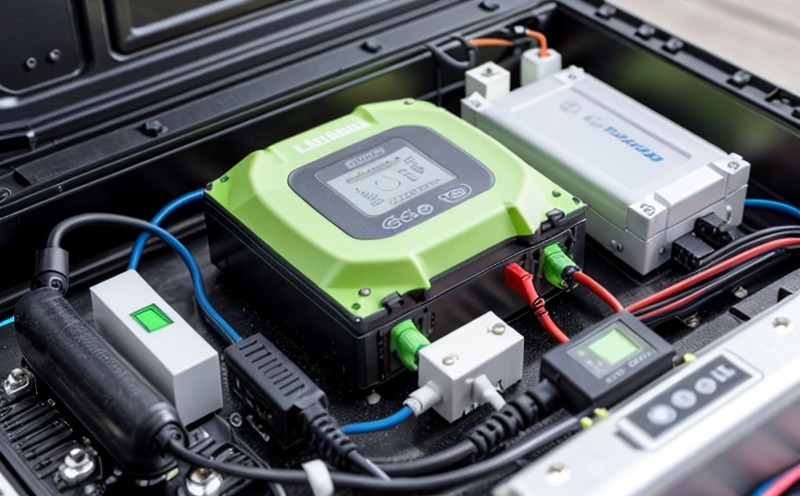KS C IEC 62133 Lithium-Ion Battery Testing for Portable Rechargeable Applications
The IEC 62133:2015 (Ed.4) standard, officially recognized in Korea as Korean Standard (KS) C IEC 62133, is a cornerstone for ensuring the safety and reliability of portable rechargeable lithium-ion batteries used in consumer electronics, medical devices, power tools, and other portable applications.
The standard specifies requirements and tests to ensure that lithium-ion cells and battery packs are safe under various operating conditions. This includes preventing dangerous situations such as overcharging, over-discharging, mechanical abuse, and thermal runaways which can lead to fire or explosion hazards.
IEC 62133 is particularly important for portable devices that may be exposed to a wide range of environmental stresses, including temperature extremes, vibration, and impact. The tests cover a variety of scenarios where batteries might encounter physical or electrical stress during use, transport, storage, or disposal.
The standard applies not only to the battery cells themselves but also to complete battery packs assembled from multiple cells. This comprehensive approach ensures that both individual cells and the overall pack meet stringent safety criteria. Compliance with IEC 62133 is mandatory for many markets, including Europe, Asia, and North America.
One of the key aspects of this standard is its emphasis on thermal management. Lithium-ion batteries are inherently prone to thermal runaway, a condition where the battery heats up uncontrollably. The tests in IEC 62133 aim to identify potential risks by subjecting batteries to controlled heating and cooling cycles, as well as exposure to short-circuiting conditions.
The standard also mandates rigorous electrical testing, including overcharge/overdischarge protection circuits, reverse polarity protection, and short circuit current limiting. These tests ensure that the battery can handle typical use scenarios without risking damage or safety hazards.
Another critical feature of IEC 62133 is its focus on mechanical integrity. Batteries must be tested for their ability to withstand physical abuse such as drop testing, vibration, and compression. This ensures that batteries can endure the rigors of transport and use without compromising safety.
The standard's scope extends beyond just the battery itself by addressing the entire lifecycle of portable rechargeable applications. From production through end-of-life recycling, IEC 62133 provides a holistic framework for ensuring safety at every stage. This is particularly important given the growing emphasis on sustainability and environmental responsibility in the electronics industry.
In summary, compliance with KS C IEC 62133 ensures that lithium-ion batteries used in portable applications are not only safe but also reliable. By adhering to this standard, manufacturers can meet regulatory requirements, protect consumers, and contribute to a safer technological ecosystem.
Applied Standards
| Standard Number | Description |
|---|---|
| Korean Standard (KS) | C IEC 62133:2015 |
| International Electrotechnical Commission | IEC 62133:2015 |
| European Committee for Standardization | EN 62133-1:2014 |
| American Society for Testing and Materials | ASTM F86-17 |
The table above lists the key standards that are applied during our testing processes. These include both international and regional standards to ensure comprehensive coverage of all relevant safety criteria.
Scope and Methodology
The scope of KS C IEC 62133 Lithium-Ion Battery Testing for Portable Rechargeable Applications encompasses a wide range of tests designed to evaluate the safety, reliability, and durability of lithium-ion batteries. The methodology is rigorous and comprehensive, ensuring that all aspects of battery performance are thoroughly examined.
The scope includes:
- Thermal stability testing
- Electrical integrity assessment
- Mechanical abuse resistance evaluation
- Labeling requirements for consumer information
Thermal stability tests involve exposing the battery to controlled heating and cooling cycles, as well as thermal shock conditions. This helps identify any potential risks associated with temperature extremes.
Electrical integrity assessments focus on evaluating the battery’s ability to handle overcharge/overdischarge situations, reverse polarity protection, and short circuit current limiting. These tests ensure that the battery can safely manage typical use scenarios without risking damage or safety hazards.
Mechanical abuse resistance evaluations involve subjecting the battery to drop testing, vibration, and compression tests. This ensures that the battery can endure the rigors of transport and use without compromising its integrity.
Labeling requirements for consumer information are also critical, as they provide essential safety instructions and warnings directly on the product packaging. Proper labeling is crucial for educating consumers about safe handling practices.
Benefits
- Enhanced Safety: Ensures that batteries are free from risks associated with overcharge, short circuits, and mechanical abuse.
- Regulatory Compliance: Helps manufacturers meet stringent regulatory requirements in various global markets.
- Consumer Trust: Builds trust among consumers by demonstrating a commitment to safety and quality.
- Risk Mitigation: Reduces the likelihood of product recalls and associated costs.
- Sustainability: Supports sustainable practices by ensuring batteries are safe throughout their lifecycle, from production to disposal.
- Market Access: Facilitates easier access to international markets that require compliance with IEC standards.
The benefits of complying with KS C IEC 62133 extend beyond safety and regulatory requirements. By adhering to this standard, manufacturers can enhance their reputation, protect consumer trust, mitigate risks, and ensure sustainable practices. Additionally, compliance opens doors to international markets that require adherence to IEC standards.





